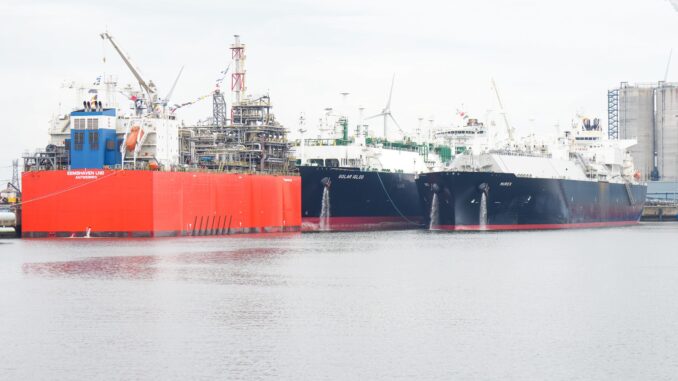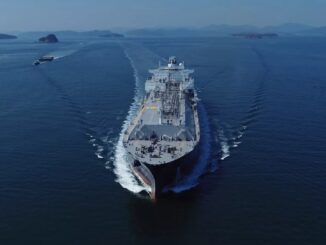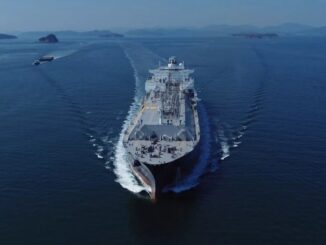
Spot liquefied natural gas (LNG) freight rates were almost flat this week when compared to the previous week, according to Spark Commodities.
Last week, LNG shipping rates fell for the first time in four weeks.
The Spark30S Atlantic decreased to $160,750 per day, while the Spark25S Pacific decreased to $151,750 per day.
“LNG Atlantic freight rates fell again week, with a 0.3 percent week-on-week decrease,” Qasim Afghan, Spark’s commercial analyst told LNG Prime on Friday.
Afghan said that the Spark30S Atlantic decreased by $500 to $160,250 per day, whilst the Spark25S Pacific increased by $250 to $152,000 per day.
Image: Spark
“Freight rates are 60 percent lower than this time last year, for both Atlantic and Pacific routes,” he said.
As per European LNG pricing, the SparkNWE DES LNG front month rose from the last week.
The NWE DES LNG for December was assessed last Friday at $13.801/MMBtu and at a $0.815/MMBtu discount to the Dutch TTF.
“The SparkNWE DES LNG price for December delivery is assessed at $14.175/MMBtu and at a $0.800/MMBtu discount to the TTF,” Afghan said.
He said this is a $0.374/MMBtu increase in DES LNG price, and the discount to the TTF narrowed by $0.015/MMBtu, when compared to last week’s December prices.
Image: Spark
“This is the first week-on-week increase in DES LNG prices in 5 weeks,” Afghan added.
Data by Gas Infrastructure Europe (GIE) shows that gas storages in the EU were 98.4 percent full on November 22 and 97.94 percent in the UK.
Temperatures across Germany and other European countries are expected to dip this weekend after a mild period.
In Asia, JKM, the price for LNG cargoes delivered to Northeast Asia, dropped from the last week, according to Platts.
JKM for January settled at $16.480/MMBtu on Wednesday.
Platts said in a report that LNG flows from the US to Asia have weakened in the face of inclement weather, with many charterers looking to longer routes through the Suez Canal and the Cape of Good Hope to avoid delays caused by low water levels in the Panama Canal.
From November 1 to 17, just six vessels arrived at the Panama Canal to voyage southbound, according to S&P Global Commodity Insights data. In comparison, 11 LNG carriers traveled southbound during that same period in 2022, it said.
Japan, the world’s largest LNG importer along China, also just approved Jera as the first supplier for the country’s “strategic buffer LNG” to secure additional LNG in the winter in case of supply disruptions.
Under the plan, Jera will secure at least one additional LNG cargo per month from December to February.



